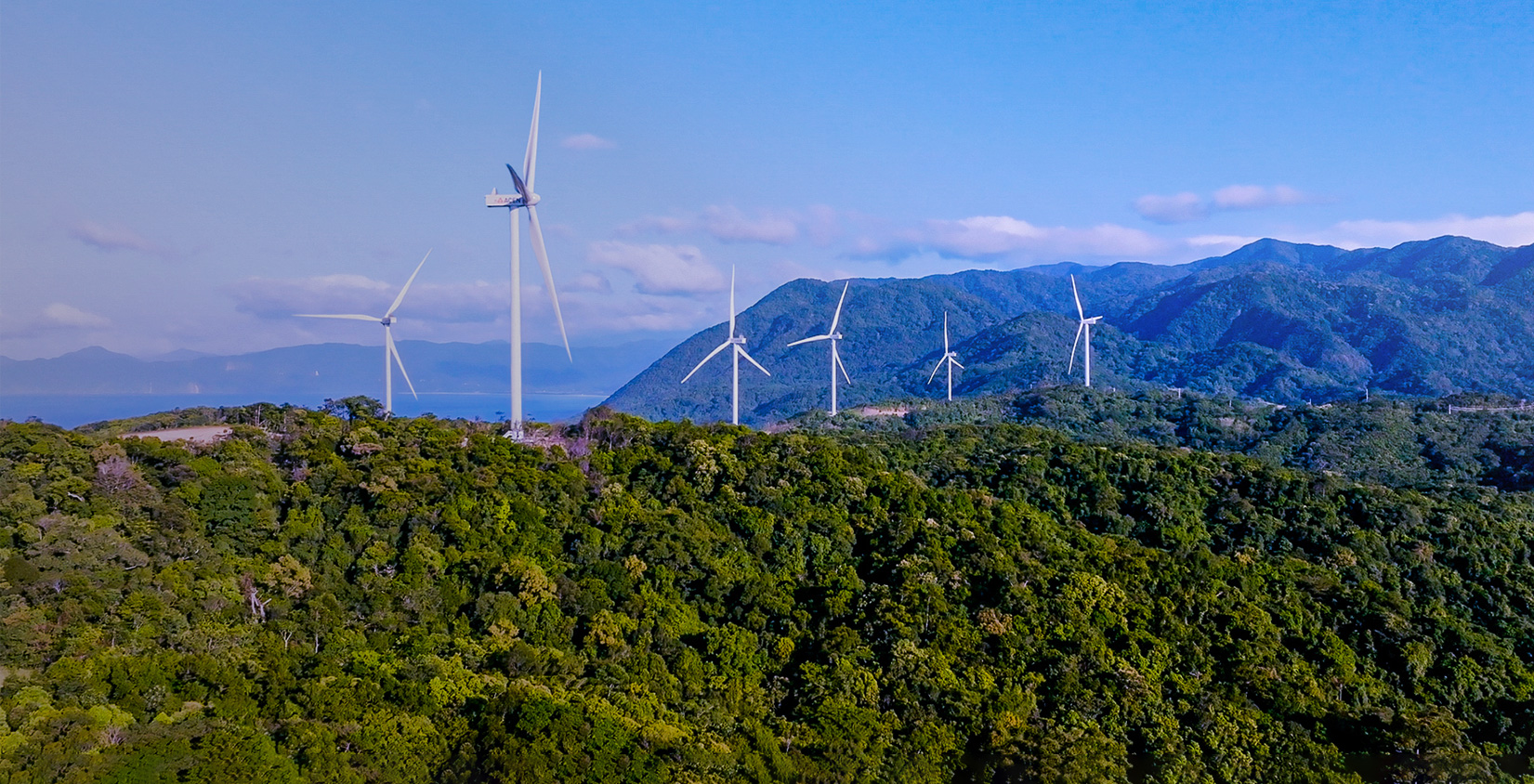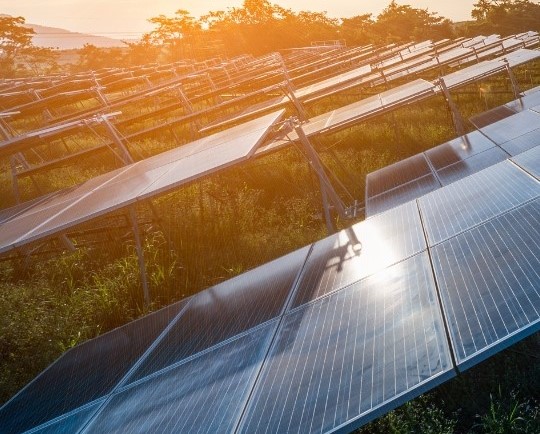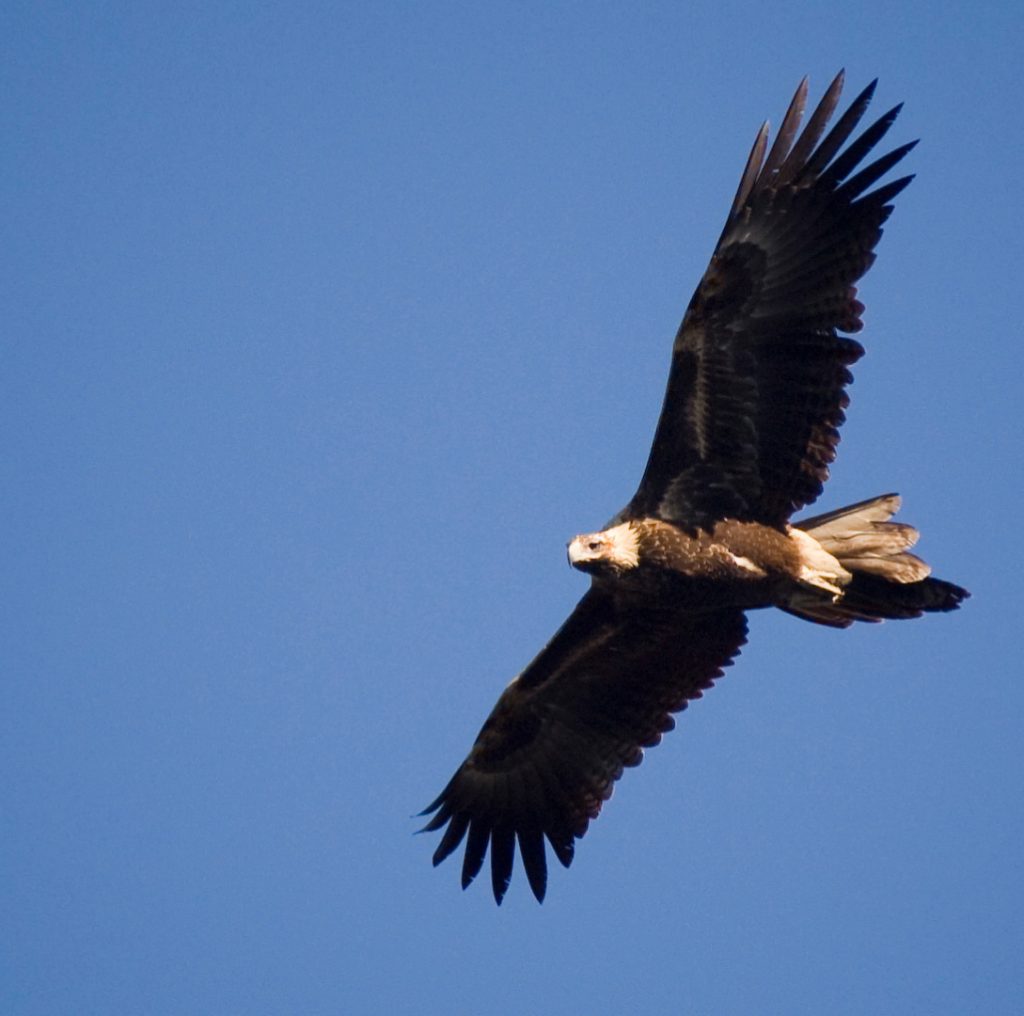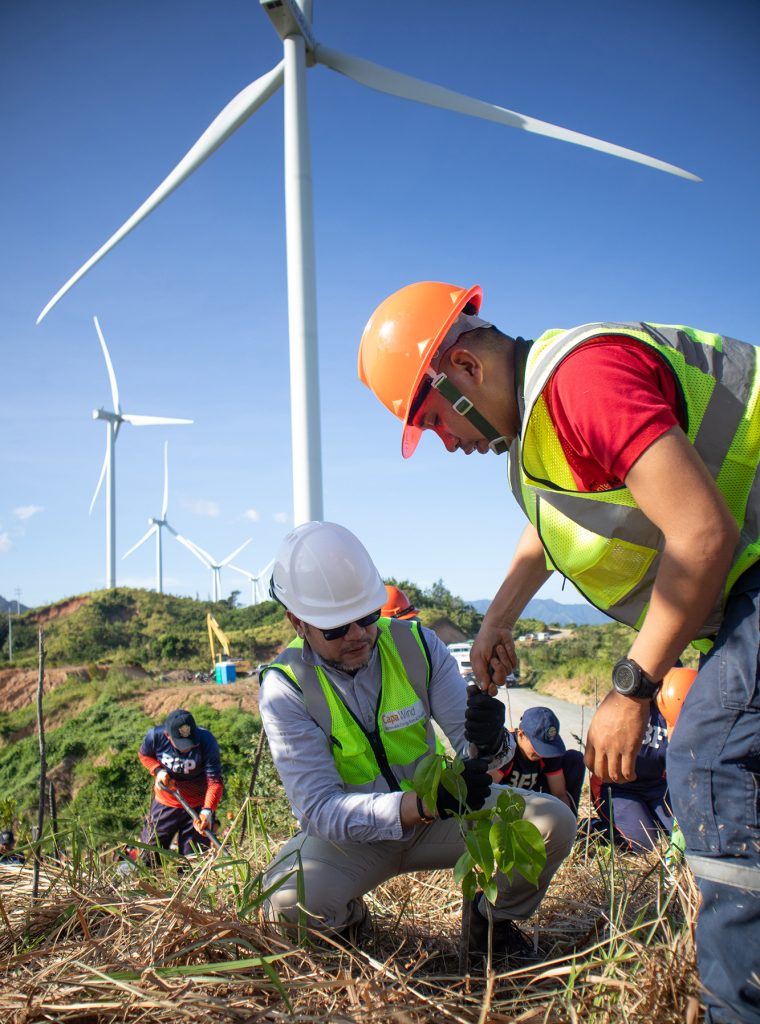-

Biodiversity
Home » Sustainability » ESG » Environment » Biodiversity
Home » Sustainability » ESG » Environment » Biodiversity
Our approach
As we scale up our renewables portfolio, we also continue to aspire for excellence in environmental management. Guided by our Environmental, Social and Governance (ESG) Policy, we are highly sensitive in selecting project sites and are mindful of our own environmental impact. We subscribe to mitigation hierarchy principle set by international conservation organizations and international standards* in developing our sites.
During the pre-development phase, we conduct a rapid desktop assessment to determine biodiversity risks and impact of potential project sites using the Integrated Biodiversity Assessment Tool (IBAT). Generated IBAT reports alongside Biodiversity Assessment Reports are used by project teams as frameworks to ensure that each project applies the mitigation hierarchy approach in site project development and all throughout its life cycle to ensure no net loss and device management measures that focused on achieving net gain are implemented as part of our ESMS.
*International Union for Conservation of Nature (IUCN) mitigating biodiversity impacts for solar and wind projects and International Finance Corporation (IFC) Performance Standards Number 6 Biodiversity Conservation
Our projects have identified risks towards biodiversity and have integrated biodiversity management plans in their environment and social management plans. Following this approach, we have redesigned and refined the development of four of our wind and solar projects to avoid disrupting rich biodiversity corridors and clearing of significant vegetation in the Philippines, Vietnam and Australia.
In the Philippines, an additional biodiversity assessment was conducted on top of an environment and social impact assessment to ensure non-overlap of our Pagudpud Wind project to a nearby key biodiversity area, Kalbario-Patapat Natural Park. The study allowed project teams to redesign placement of wind turbine generators which avoided over 6,000 trees for the project development.
For our wind projects in Vietnam and Philippines, post-fatality monitoring programs are also being implemented to develop appropriate mitigation measures based on frequency of bird and bat collision to wind turbine generators. These measures include the use of sonar acoustic deterrent white strobe lights, implementation of no-go zones, changing paint colors of wind turbine blades to be less attractive to birds and adjusting surrounding environment to remove other encouraging influences.
Furthermore, three of our Vietnam wind farms’ wind turbine generator cut-in speeds were adjusted in locations and periods with the highest frequency of strikes to reduce bat mortality and new artificial habitat for specific bat species were established.
In Australia, we have refined our New England Solar project biodiversity footprint to minimize clearance of native vegetation, avoidance of higher order watercourses and riparian corridors, and environmental constraints identified in the environmental impact statement. This resulted in an avoidance of significant values including woodland areas representative of significant woodland tableland bioregions.
Most of our solar farm project sites have immaterial risk to biodiversity mainly because the land requirement for solar plants to operate effectively must be on flat terrain with minimal development. Most project sites have implemented similar measures to offset the impact of vegetation loss from land clearing needed for developing projects. These measures include tree-planting and tree-seedling replacement corresponding to the number of trees cut per project to ensure the no net loss.
In our Paryapt Solar in India, despite having moderate risk, we have developed a comprehensive biodiversity management plan. This includes afforestation and biodiversity conservation, systematic data collection system process and periodic reporting system on biodiversity conservation.

Conservation Estate in Ilocos Norte, Philippines
For our Sea Turtle ”Pawikan” Conservation Program, we have continued monitoring and protecting 81 hectares of foreshore area in Bangui, Ilocos Norte all throughout nesting and hatching season of three IUCN Red list of threatened species: Olive ridley sea turtle, Green sea turtle and Hawksbill sea turtle. Coastal areas in the municipalities of Pagupud, particularly in the villages of Caparispisan and Balaoi, are closely monitored by partner-community organizations and trained locals to rescue pawikan caught in fishing nets (by-catch) and sightings of pawikan nests that need to be transferred in the local hatchery. The strong support of the community in our efforts is a result of our pawikan conservation trainings and local pawikan gonservation group watch. In April 2023, we were able to organize a ceremonial pawikan hatchling release together with our local partners such as the DENR, Community Environment and Natural Resources Office Bangui (CENRO Bangui), Philippine Coast Guard, Philippine National Police, Bureau of Fire Protection and officials from the local government of Bangui.
For the impact of our wind turbine generators to avifauna, we have installed a bat deterrent system and have continued to monitor bird and bat mortality all throughout the year, which form part of our conservation efforts with the help of conservation consultants.
We have also strengthened our biodiversity conservation efforts by organizing our pilot Sustainability Program Information, Education & Communication (IEC) Campaign in four public schools. The collaborative session with students was filled with meaningful discussions on environmental conservation in the area. One session of the campaign also involved local children painting murals and sculpture made from indigenous and recyclable materials as means to support local pawikan conservation efforts.
Additionally, we have worked with Philippine Native Plant Conservation Society, Inc. (PNPSCI) to hold a symposium on Philippine native plants conservation. The event gathered approximately 200 botanists and experts in the country who discussed new technologies in plant conservation through different plenary sessions. Other organizations that participated in the symposium include the Millenium Seed Bank Trust UK and the Arboretum Network (ArbNet) USA, Botanic Gardens Conservation International (BGCI), Southeast Asia Botanic Gardens alliance (SEABG) and Northwestern University Ecological Park & Botanic Gardens (NUEBG).
Raptor Refuge Program in Tasmania, Australia
In Australia, our Raptor Conservation Program, in partnership with Forest Practices Authority, Trustee for the Pennicott, Wilderness Journeys Nature Conservation Trust, Environmental Protection Authority, University of Canterbury, Christchurch NZ, Epuron Projects PTY LTD (Acquired by Ark Energy in 2023, Woolnorth Renewables and University of Tasmania (UTAS), aims to minimize the impact of wind turbines and disturbance from forestry activity on Tasmanian wedge-tailed eagles (Aquila audax fleayi).
The four-year project administered by University of Tasmania aims to develop models to predict flight behavior and risk for collisions with wind turbine generators and energy infrastructure, measure effects of forestry activity on species breeding, rigorously estimate size and distribution of the species population, and synthesize data from AIMS 1-3 and other sources to build spatially explicit demographic models to define conservation priorities to improve ecological understanding towards effective conservation management.
 Our conservation initiatives in Australia aim to minimize the impact of wind developments on the endangered Tasmanian wedge-tailed eagle.
Our conservation initiatives in Australia aim to minimize the impact of wind developments on the endangered Tasmanian wedge-tailed eagle.Conservation efforts in Mt. Halimun Park, Indonesia
In Indonesia, we continue to work closely with the administration of Mount Halimun Salak National Park, where our Salak & Darajat Geothermal project, a partnership with Star Energy Geothermal, is co-located. Our collaboration with the national park is geared toward monitoring flora and fauna health, increasing wildlife population, improvement of habitats through tree planting and establishment of wildlife corridors, conduct of conservation education programs and community-based ecotourism in nearby villages.
Meanwhile, our Eye on the Forest program with Conservation International since 2014 has contributed to an increase in biodiversity net gain at the 400-square-kilometer national park. Researchers from the Mount Halimun Salak National Park Office recorded and identified more than 11 Javan leopards in the Salak area, while the Ministry of Environment and Forestry said that a population of Javan eagles and its eggs have also been discovered in the area.
Furthermore, in 2023, through the project’s Green Corridor Initiative (GCI), Salak & Darajat Geothermal’s operational area was chosen as the location for the release of a 6-year-old Javan leopard named ”Wahyu.” The GCI, alongside other stakeholders including the West Java Natural Resources Conservation Center (BBKSDA) and the Gunung Halimun Salak National Park (TNGHS), with support from the Cikananga Integrated Conservation Foundation, Sintas Indonesia Foundation, Javan Leopard Conservation Forum, Fansfornature, Orang Utan Help, Wanicare, Gembira Loka Zoo and Bakti Barito Foundation, has successfully protected endangered species over the past decade Javan gibbon, Javan leopard and Javan hawk-eagle.
Recognizing the importance of protecting natural ecosystems in limiting the global temperature below 1.5°C, we have worked with SouthPole and the University of the Philippines Los Baños College of Forestry and Natural Resources (UPLB CFNR) for our GHG inventory scope 1, 2 and 3 baseline and to reassess the carbon stock of our Conservation Estate, respectively.
We’re also collaborating with the University of the Philippines Marine Science Institute (UP MSI) to determine potential blue carbon sites near our areas of operations in Ilocos Norte.
Since 2014, our efforts in forestland protection and implementation of environmental programs in our Conservation Estate have resulted in the preservation of ~94 kilotons of carbon, equivalent to ~345 kilotons carbon dioxide as assessed by UPLB CFNR.


These efforts resulted in increased forest cover and enhancement of carbon stock, adding ~21 kilo tons of carbon, equivalent to 77.6 kilo tons of carbon dioxide sequestered since we conducted our carbon stock baseline assessment in 2018 as assessed under ISO 14062-2 (2019)E through verifier and validator, Carbon Check. This outcome is a result of our continued collaboration with the community in protecting and managing natural habitats while providing green jobs and livelihood.
At the time, a total of ~7 kTC of carbon stored were stored within ~188 ha portion of the Conservation Estate, equivalent to 23.8 kilo tons of carbon dioxide equivalent. These numbers are expected to grow as we expand our carbon stock project through forest protection and restoration efforts in Pagudpud Wind and Capa Wind.
Moreover, we have protected ~2,200 hectares of natural habitat areas and planted ~978, 000 trees across 39 sites. This represents a 98 percent completion of our target to plant one million trees by 2025.
Read more about about our Conservation Estate in Ilocos Norte
Read more about our Net Zero roadmap